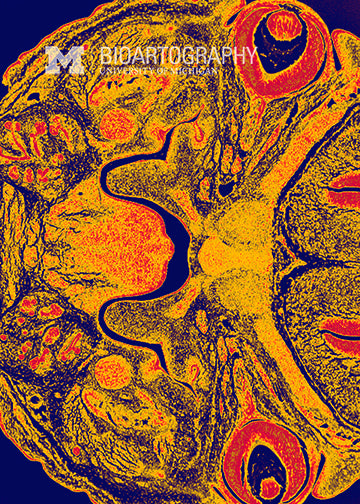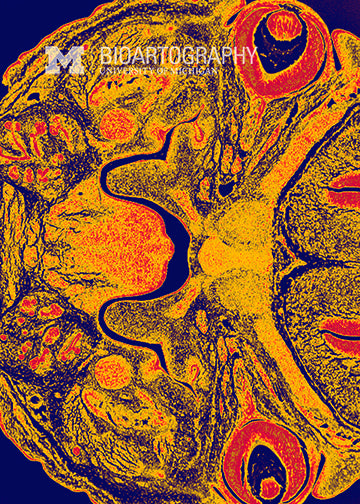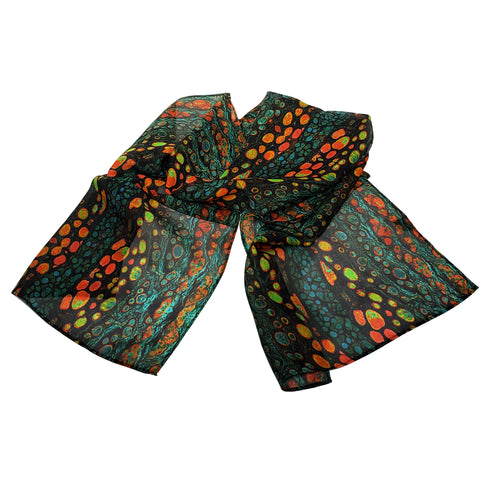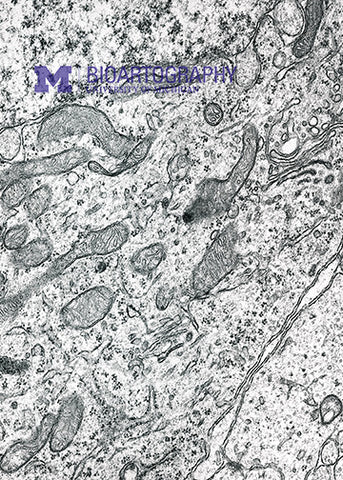

Deneen Wellik, Professor, Department of Internal Medicine and Sabita Rakshit, Research Associate, Department of Internal Medicine, University of Michigan Medical School
The most common facial birth defect in humans is cleft palate, where the palatal shelves fail to fuse during embryonic development. This is a section through the head of a developing mouse that has a mutation in the Hoxa2 gene. The red, central structure is the tongue, with the palatal shelves on either side. During embryonic development, these shelves should turn towards one another and fuse to form the palate (roof of the mouth). In this mutant, the palatal shelves do not rotate and, therefore, cannot fuse, and the mice are born with severe cleft palate. The two red structures at the sides of the pictures are the developing eyes, and the two red structures on either side below the tongue are the submandibular glands, which produce saliva.



